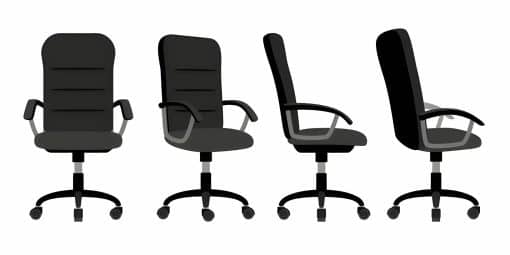Ergonomic Chairs
Mastering Comfort: A Comprehensive Guide to Ergonomic Chairs
In the fast-paced and digitally driven world we live in, the importance of maintaining our health and well-being cannot be overstated. As we spend significant portions of our day sitting, especially in office settings, the choice of seating becomes crucial. This is where ergonomic chairs step in, revolutionizing the way we experience comfort while working. In this comprehensive guide, we will delve into the world of ergonomic chairs, exploring their benefits, features, and why they are an essential component of ergonomic office equipment.
Understanding Ergonomic Chairs
Ergonomic chairs are designed with the primary goal of providing optimal comfort and support to the user, with a keen focus on promoting good posture and reducing the risk of musculoskeletal issues. These chairs are crafted to adapt to the natural curves of the human body, ensuring that prolonged periods of sitting do not lead to discomfort or health issues.
Benefits of Ergonomic Chairs
Improved Posture: One of the most significant advantages of ergonomic chairs is their ability to promote good posture. With proper lumbar support and adjustable features, users can maintain a neutral spine position, reducing the risk of back pain and discomfort.
Enhanced Comfort: Ergonomic chairs are synonymous with comfort. The ability to customize the chair according to individual preferences ensures that users can enjoy a seating experience tailored to their unique needs.
Increased Productivity: Comfortable and well-supported employees are more likely to stay focused and productive throughout the workday. Ergonomic chairs contribute to a positive work environment by minimizing distractions caused by discomfort.
Prevention of Health Issues: Prolonged sitting in non-ergonomic chairs can contribute to health issues such as back pain, neck strain, and even more severe conditions over time. Ergonomic chairs play a proactive role in preventing these issues.
Key Features of Ergonomic Chairs
Let’s explore the key features to look for in an ergonomic chair:
Adjustability: This is the golden rule of ergonomic chairs. Look for chairs with adjustable features like seat height, armrest height and position, lumbar support, and backrest tilt. This allows you to customize the chair to fit your unique body shape and preferences.
Lumbar support: This built-in feature provides crucial support for the lower back, helping maintain proper spinal curvature and reducing strain on the muscles.
Seat depth and width: Choose a chair with a seat that allows your feet to rest flat on the floor with your knees at a 90-degree angle. The seat should be wide enough to comfortably distribute your weight.
Breathable materials: Opt for chairs with breathable materials like mesh or fabric to keep you cool and comfortable throughout the day.
Headrest (optional): While not essential, a headrest can provide additional comfort and support for your neck, especially if you spend a significant amount of time leaning back.
Choosing the Right Ergonomic Chair for You
With a wide variety of ergonomic chairs available in the market, selecting the right one can be overwhelming. Here are some factors to consider when making your choice:
Body size and shape: Different chair sizes cater to different needs. Ensure the chosen chair offers adequate support for your specific body type.
Work style: Consider your typical work activities and posture. If you frequently lean back, a chair with a reclining feature might be beneficial.
Budget: Ergonomic chairs can range from affordable options to high-end models. Determine your budget and prioritize features most important to you.
Material and build quality: Invest in a well-made chair with durable materials that will last for years.
Pro tip: It’s always recommended to try out different ergonomic chairs before purchasing one. Visit a furniture store or ergonomic office equipment specialist to get a feel for the adjustments and comfort level of various options.
Beyond the Chair: Optimizing your Workspace
While an ergonomic chair is a significant step towards creating a comfortable workspace, it’s crucial to consider other ergonomic office equipment as well. Here are some additional tips:
Proper monitor placement: Adjust the height and position of your monitor so it’s directly in front of you, at arm’s length and slightly below eye level.
Keyboard and mouse placement: Ensure your keyboard and mouse are positioned comfortably, allowing your wrists to remain neutral while typing or using the mouse.
Regular breaks: Regardless of your chair or workstation setup, take regular breaks to stand up, move around, and stretch your muscles.
Investing in an ergonomic chair and creating a comfortable work environment is more than just a luxury; it’s an investment in your health and well-being. By following the guidance in this comprehensive guide, you can master the art of comfort and empower yourself to thrive in your work environment. Remember, prioritizing ergonomics not only promotes immediate comfort but also contributes to a healthier, happier, and more productive work life.

